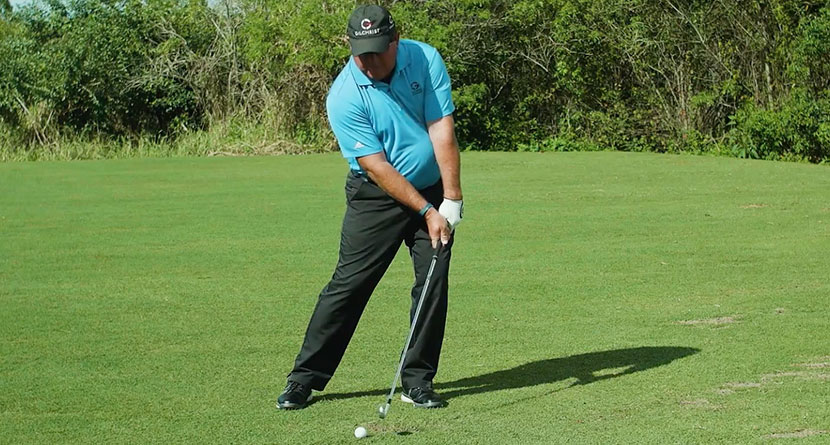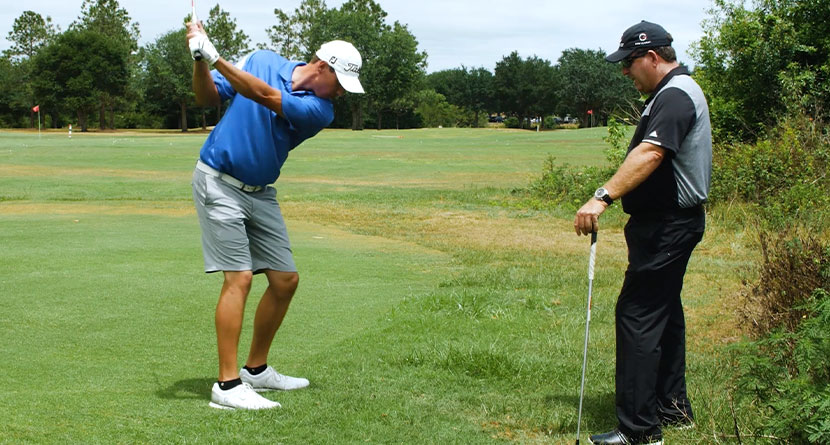Golf is a game of measuring risk vs. rewards. Does taking on a difficult shot yield a plausible result that will greatly impact your score for the better, or are you just setting yourself up to make a big number?
Contrary to perception, Tiger Woods is one of the most calculated and conservative players on the planet, which is also what made him so consistently good over the past two decades. However, when opportunities presented themselves and the reward outweighed the risk, Tiger was never one to back down from a difficult shot.
Case in point: this chop-cut 5-wood from the rough during the final round of the 2015 Quicken Loans Championship.
Facing a tough shot, but one with little to no trouble up near the green, Woods pulled off a shot that can be useful to amateur players looking to cover significant ground with little risk of adding devastating penalty strokes to their score.
SwingU instructor Aaron Ungvarsky explains how to play the shot.
The Setup
- Addressing the ball with more hip flex than normal and positioning your weight over your heels will help anchor you into the slope, fighting gravity as you swing. The slope will want to pull you down into the ball, causing the flight of the ball to shoot right sooner than planned and your swing speed/power will be less if you fall into the impact zone.
- Once anchored properly, adjusting body lines so your alignment is 15-20 yards left of the target (for the right-handed golfer) gives safe room to play a large chop-cut with the fairway wood.
- The ball position is back of center and behind where the wood is normally played. This is because the rough dictates we swing with a descending blow, slashing through the grass between the clubface and the ball to get as consistent of a strike as possible. Notice how Tiger is playing the shot in a position normal for a 9-iron.
The Swing
- With the stable foundation in place, make a backswing motion that is more upright than a normal fairway wood backswing. The goal is to create a steeper plane and an out-to-in path. The steep swing plane ensures we chop down on the ball and the out-to-in path produces the fade.
- While taking the club back, keep the hands quiet and do not over rotate. Quiet hands help to hold the clubface open on the way through.
- Focus on Tiger’s unique finish. This shot requires an equally unique body motion after impact. Allow your left arm to lead the follow through and fight to keep the left elbow ahead of the club as long as possible. You will produce the usually-avoided “chicken wing” finish, but this is perfect for the chop-fade.
NOTE: The setting to execute this shot requires confidence, good clubface awareness, but also a wide fairway and minimal-to-no trouble near the green or landing area. Even though Tiger pulled it off perfectly, we can see that if it was off the mark, there would not have been too severe of compounding errors.













